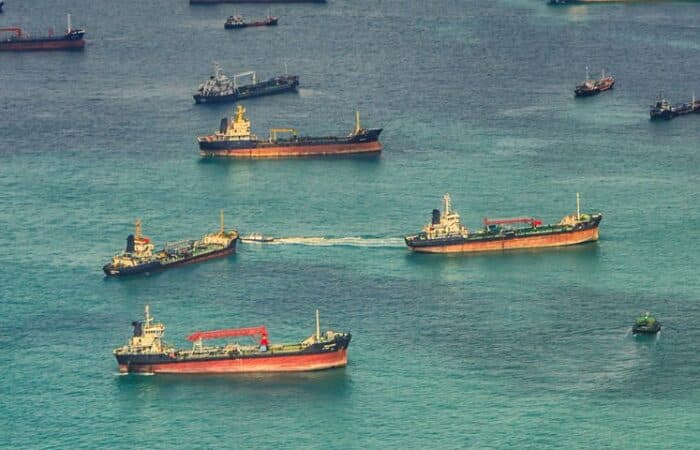Maritime Mobile Service Identity (MMSI)
What is Maritime Mobile Service Identity (MMSI)?
Maritime Mobile Service Identity (MMSI) is a unique, 9-digit number assigned to a digital selective calling (DSC) radio. It acts as a digital fingerprint for vessels, making it easier for other boats and authorities to identify and communicate with a ship at sea quickly. The International Telecommunications Union (ITU) in Geneva allocates, manages, and regulates MMSIs.
The Structure of an MMSI Number
There are two parts to an MMSI number:
- The first three digits are the maritime identification digits (MID), identifying the country that issued the number.
- The last six digits are the Mobile Station Identifier (MSI), which can be any number from 0-9, and is unique to a vessel or radio.
Who Needs an MMSI?
Any ship that is required to carry a VHF radio with DSC capabilities needs an MMSI. This includes most vessels over 20 meters in length, as well as some smaller vessels, depending on the country’s regulations. Other maritime objects – such as fixed offshore installations, mobile units, and maritime aircraft – may also be assigned MMSIs.
All vessels participating in the International Maritime Organization’s (IMO) Global Maritime Distress & Safety System (GMDSS) must have an MMSI. As a key maritime communication feature, the GMDSS establishes an internationally accepted framework for coordinated VHF radio communications among merchant vessels. It ensures continual and synchronized contact between multiple ships, or between ships and shore operators through satellite and terrestrial networks.

What is the Purpose of an MMSI?
The primary purpose of an MMSI is to provide a standardized and unique identifier for maritime entities, enhancing safety, communication, navigation, and regulatory compliance in the maritime domain.
A ship’s automatic identification system (AIS) transponder transmits the MMSI every 30 seconds. This information can be accessed by Vessel Traffic Services, shore stations, the Coast Guard, and other ships with access to AIS equipment.
MMSI provides a unique identification number for each maritime entity, ensuring that no two share the same identifier. This allows for precise identification in maritime communication and tracking systems.
It is also a fundamental component of the AIS, used for real-time vessel tracking and collision avoidance. The MMSI is transmitted as part of the AIS signal, enabling vessels to be identified and tracked by other vessels and maritime authorities.
MMSI is used in DSC, a method of initiating digital communication between ships, or between ships and shore stations. It allows ships to send and receive distress calls, position reports, and other messages directly to other vessels with DSC radios.
In emergency situations, such as distress or man-overboard incidents, MMSI facilitates quick and accurate identification of the distressed vessel. Search and rescue authorities rely on MMSI to locate and coordinate assistance efforts.
Lastly, using MMSI helps with efficient traffic management by allowing maritime authorities to monitor vessel movements, prevent collisions, and manage the flow of maritime traffic in busy waterways.
The Difference Between an MMSI Number and an IMO Number
MMSI and IMO numbers are both used for identification purposes in the maritime industry, but they serve different functions and are assigned by different organizations.
MMSI
- Function: MMSI is primarily used to identify and address radio communication equipment on a vessel. It is also used in systems like VHF radio, AIS , and satellite communication.
- Assignment: MMSI numbers are assigned by national authorities responsible for maritime communications in each country. They are typically obtained by vessel owners or operators.
IMO Number
- Function: the IMO number uniquely identifies ships. It is a seven-digit number that remains with the vessel throughout its life, regardless of changes in name, ownership, or flag. This is particularly important for ships engaged in international trade.
- Assignment: IMO numbers are assigned by the International Maritime Organization (IMO), a specialized agency of the United Nations responsible for regulating shipping. The numbers are assigned to ships over 100 gross tons and certain types of smaller vessels.
MMSI and Deceptive Shipping Practices
Bad actors are involved in deceptive shipping practices that manipulate the uniqueness of the Maritime Mobile Service Identity number for their illicit purposes. This is especially true when it comes to AIS handshakes, AIS gaps, and flag hopping.
AIS handshakes involve two vessels, typically a “clean” one with a legitimate identity and a “dirty” one engaged in illegal activities, such as smuggling or sanctions evasion. They engage in a secret exchange of AIS transponders, essentially swapping identities. The “dirty” vessel transmits its MMSI and other data to the “clean” one, effectively taking on its identity. The “clean” vessel then transmits its information to the “dirty” one, completing the swap.
Manipulating the MMSI misleads other vessels, authorities, or systems relying on AIS data for tracking.
Similarly, with AIS gaps, the weak or turned-off transponder signal can be exploited by vessels engaging in deceptive shipping practices. They may try to avoid detection by pausing the MMSI broadcast, or transmitting false MMSI information.
Flag hopping involves a vessel rapidly changing its flag registration to bypass regulations, evade sanctions, or hide its illicit activities. When a vessel changes flags, it requires a new MMSI, because the MID is different for every country. This can make it difficult for authorities to track the vessel’s history and identify its previous activities under different flags, potentially hindering investigations and enforcement efforts.







